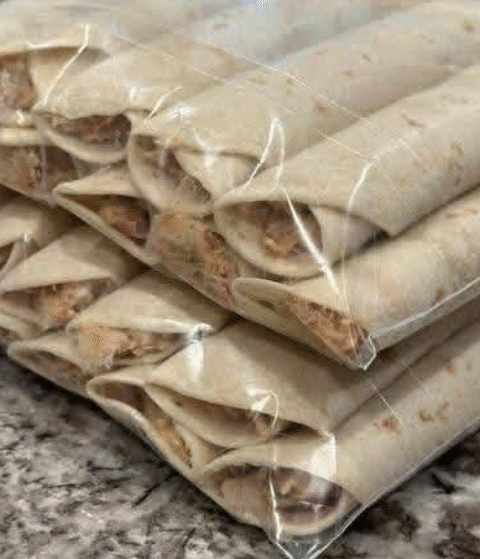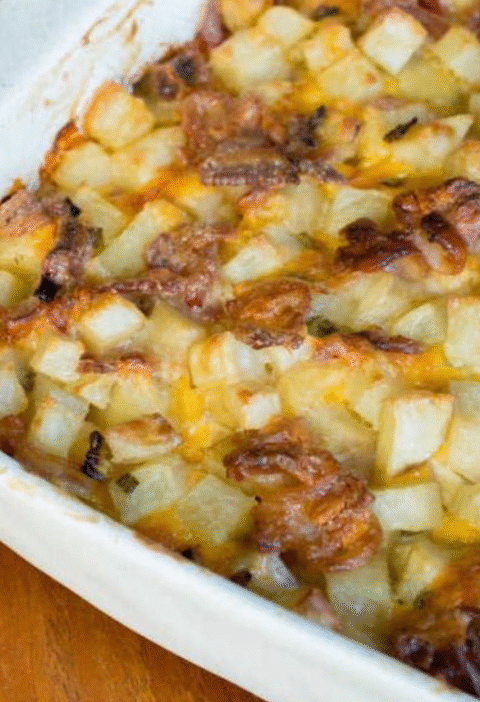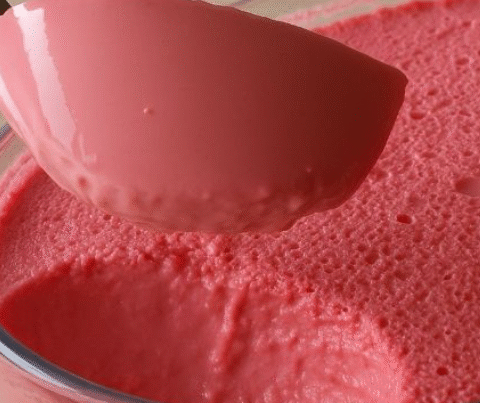Crab & Shrimp Seafood Bisque — A Luxurious, Creamy Delight
If you love the silky, velvety essence of shellfish drenched in a rich, creamy broth, then this Crab & Shrimp Seafood Bisque is your next kitchen masterpiece. It’s indulgent, comforting, and luxurious—perfect for entertaining or treating yourself on a special night. This guide gives you every detail: from ingredient rationale and technique to advanced tips, troubleshooting, nutrition, and FAQs. Let’s dive in.
What Is a Bisque & Why This Recipe Works
The word *bisque* traditionally refers to a smooth, creamy soup of French origin made from crustaceans (lobster, crab, shrimp, crawfish) that involves puréeing and sometimes straining the shells or meat to extract maximum flavor. :contentReference[oaicite:0]{index=0}
Unlike a chunkier chowder, bisques are elegant and silky. The technique often involves building flavor from the shells or leftover bits, creating a roux or thickener, then finishing with cream and puréeing. :contentReference[oaicite:1]{index=1}
In this version, we keep things relatively approachable: you sauté aromatics, make a light roux, add broth, cream, and then incorporate crab and shrimp, with optional blending for that classic smooth texture. The recipe balances richness, seafood flavor, and body.
What You’ll Find in This Guide
- A full ingredient list (US + metric) with explanations
- Step‑by‑step method with detailed timing and tips
- Chef secrets and common pitfalls to avoid
- Multiple variations & flavor twists
- Nutrition estimates & health considerations
- Storage, reheating & food safety advice
- 10 FAQs to anticipate your questions
- Serving & presentation suggestions
Ingredients & Why They Matter
Base Ingredients (U.S. / Imperial)
- 1 tablespoon olive oil
- ½ cup onion, finely chopped
- ¼ cup celery, finely chopped
- 3 garlic cloves, minced
- 2 tablespoons unsalted butter
- 2 tablespoons all‑purpose flour
- 2 cups seafood stock or chicken broth (or combination)
- 1 cup heavy cream (or half‑and‑half, if preferred)
- 8 oz cooked shrimp, peeled & deveined (chopped if large)
- 8 oz crab meat (lump, flaked, or picked over for shells)
- 1 tablespoon tomato paste (optional, for depth)
- ½ teaspoon Old Bay seasoning or similar seafood blend
- Salt & freshly ground black pepper, to taste
- Fresh parsley or chives for garnish
- Optional: a splash of sherry or white wine (for depth)
Metric / Approximate Conversions
- Olive oil: ~15 mL
- Onion: ~60 g
- Celery: ~30 g
- Garlic: ~9–12 g (3 cloves)
- Butter: ~28 g (2 tbsp)
- Flour: ~16 g (2 tbsp)
- Stock / broth: ~480 mL (2 cups)
- Heavy cream: ~240 mL
- Shrimp: ~225 g (cooked weight)
- Crab meat: ~225 g
- Tomato paste: ~15 g
- Seasoning, salt & pepper: to taste
- Sherry / wine: ~15–30 mL if using
Ingredient Roles & Tips
- Olive oil + butter: The fat base helps sauté aromatics and carries flavor; butter adds richness.
- Onion & celery: Classic mirepoix base giving sweet and savory aromatics.
- Garlic: Adds aromatic depth—use fresh, not powder, for best flavor.
- Flour (roux): Thickens the bisque base, binding liquid components into a creamy texture.
- Seafood stock / broth: Provides the liquid and background flavor; fish or shellfish stock is ideal, or good-quality chicken broth works.
- Heavy cream: Finishes the bisque with smoothness and luxurious body.
- Shrimp & crab: The star proteins; you add them late so they remain tender, not rubbery.
- Tomato paste (optional): Adds depth and subtle acidity to round out richness.
- Old Bay or seasoning blend: Gives classic seafood flavor with paprika, celery salt, and herbs.
- Sherry or wine (optional): Adds complexity and subtle acidity in the background.
- Herbs for garnish: Color, freshness, and aroma contrast.
Step‑by‑Step Method
1. Sauté Aromatics
In a heavy stockpot or Dutch oven, heat the olive oil and butter over medium heat until melted and shimmering. Add the chopped onion and celery. Sauté gently, stirring, for 4–5 minutes until softened but not browned. Add garlic and cook about 30 seconds until fragrant (do not let it burn).
2. Create the Roux
Sprinkle the flour over the softened vegetables and stir constantly for 2–3 minutes, cooking off the raw flour flavor. This forms a light roux that will help thicken the bisque as liquid is added.
3. Add Liquids & Build the Base
- Gradually whisk in the seafood stock (or broth), ensuring no lumps remain. Scrape the bottom to incorporate the browned bits (fond).
- If using, add the tomato paste and whisk until fully dissolved.
- Add Old Bay seasoning (or your seafood spice blend). Season lightly with salt & pepper, keeping in mind the heaviness of cream and seafood meat later.
- Optional: if using sherry or white wine, add a splash now and simmer a minute to evaporate alcohol.
4. Simmer & Infuse
Bring the mixture to a gentle simmer and let cook for 10–15 minutes to allow flavors to meld and the bisque base to thicken slightly. Stir occasionally. This time also helps mellow the raw flour taste and deepen the flavor profile.
5. Add Seafood Proteins
Stir in the shrimp and crab meat carefully. Simmer for just a few minutes (2–4 min) until the seafood is heated through but still tender. Overcooking will make shrimp rubbery and crab stringy, so be cautious.
6. (Optional) Purée for Smooth TextureIf you prefer a fully smooth bisque, use an immersion blender (or transfer in batches to a high-speed blender) to purée some or all of the mixture until silky. Some traditional bisques are passed through a fine sieve to remove any fibrous bits. :contentReference[oaicite:2]{index=2}
7. Finish with Cream & Adjust Seasoning
8. Garnish & ServeLadle hot bisque into bowls, garnish with chopped parsley or chives, a swirl of cream if desired, or even small cooked shrimp or crab bits. Serve immediately with crusty bread or garlic toast.
Chef Tips, Tricks & Best Practices
- Use quality seafood meat: Fresh or well-handled shrimp and lump crab meat make a difference in flavor and texture.
- Cook each component just enough: Serve the aromatic base, roux, proteins, and cream in balanced timing to prevent overcooking or separation.
- Don’t overheat cream: Add it off or at low heat to prevent curdling or breaking the sauce.
- Use a heavy pot: A thick-bottomed pot or Dutch oven helps maintain stable heat and prevents scorching.
- Blend carefully: If puréeing, do so gradually and in batches to avoid spills or heat shock.
- Season late: Seafood meat and cream already contribute saltiness—taste before you overdo seasoning.
- Balance richness with acidity: A small splash of lemon juice or white wine can brighten and lift heavy flavors.
Variations & Flavor Twists
Classic French “Provencal” Style
Add saffron threads, orange zest, or a pinch of cayenne for depth and complexity (often used in Provençal bisques). :contentReference[oaicite:3]{index=3}
Lobster‑Crab Blend
Include lobster tail meat or claw meat along with shrimp and crab for even richer flavor (common in higher-end bisques). Many seafood bisque recipes use mixed shellfish. :contentReference[oaicite:4]{index=4}
Spicy Cajun Bisque
Add Cajun or Creole seasoning, cayenne, smoked paprika, or a dash of hot sauce for heat. Some Louisiana-style bisques use sherry + cayenne as well. :contentReference[oaicite:5]{index=5}
Herb‑Infused Version
Add fresh thyme, tarragon, or dill near the end to add herbal brightness. You might also garnish with microgreens or basil chiffonade.
Vegetable‑Fortified Bisque
Add carrot, fennel, or bell pepper when sautéing aromatics to add sweetness and body. Some versions of seafood bisque include a carrot base. :contentReference[oaicite:6]{index=6}
Thin or Thick Styles
For a thinner bisque, reduce cream or increase stock; for thicker, reduce liquid or add a bit more roux or a cornstarch slurry.
Nutrition & Health Considerations
Below is an approximate nutrition estimate per serving (serving ~4). Use your specific ingredient labels for precision.
| Nutrient | Estimate per Serving |
|---|---|
| Calories | ~ 320‑420 kcal |
| Protein | ~ 20‑30 g |
| Total Fat | ~ 18‑27 g |
| Saturated Fat | ~ 9‑14 g |
| Carbohydrates | ~ 10‑18 g (from roux, vegetables, cream) |
| Fiber | ~ 1‑2 g |
| Sugar | ~ 1‑3 g (from vegetables / cream) |
| Sodium | Moderate to high depending on stock & seasoning |
Health Tips & Adjustments:
- Use low-sodium or homemade stock to control sodium levels.
- Substitute part of heavy cream with half‑and‑half or milk to lighten creaminess.
- Use more seafood and less cream to increase protein-to-fat ratio.
- Add extra vegetables (carrot, celery) to increase volume and fiber without many extra calories.
- Limit garnish fatty additions (like extra butter) if you prefer a lighter finish.
Storage, Reheating & Food Safety
Storage
- Allow bisque to cool somewhat (but don’t leave it out too long), then transfer to an airtight container and refrigerate.
- Use within **2–3 days** for best freshness (seafood products degrade more quickly).
- Freezing is possible but may affect cream texture or cause separation; freeze without garnish or delicate seafood bits, then thaw slowly and re-blend before serving.
Reheating
Food Safety & Hygiene
Troubleshooting & Common Mistakes
- Bisque too thin: Simmer uncovered to reduce; add more roux or a bit more flour in slurry.
- Bisque too thick / heavy: Thin with broth, milk, or a bit more liquid.
- Sauce breaking or curdling: Avoid high heat after adding cream; add it slowly off heat.
- Seafood overcooked / rubbery: Add shrimp and crab late and cook just until heated.
- Raw flour taste: Make sure to cook roux for a few minutes before adding liquid.
- Grainy texture: Purée carefully or strain; ensure you’re not overheating cheese or cream.
10 FAQs You May Have
1. Can I skip blending the bisque?
Yes — you can leave it with chunks of vegetables and seafood for texture. Blending is optional and mostly for elegance.
2. Can I use canned crab or shrimp?
Yes — drain well and remove any shell bits. Use cooked seafood so you only need to gently warm it in the bisque.
3. Is this safe to freeze?
You *can* freeze, but the cream may separate somewhat upon thawing. Thaw in fridge, stir gently, perhaps re-blend before reheating.
4. Can I use milk instead of cream?
You can substitute some or all of the cream with milk or half-and-half, but the bisque will be lighter and less rich. Be careful with boiling temperatures.
5. What stock is best?
A shellfish or seafood stock is ideal, but good-quality low-sodium chicken broth also works as a base. Many bisque recipes use a blend. :contentReference[oaicite:7]{index=7}
6. Why use tomato paste?
Tomato paste adds depth, slight acidity, and helps balance rich cream flavors. It’s optional but beneficial.
7. Can I add other seafood (lobster, scallops)?
Definitely. Lobster, scallops, or fish pieces can be added. Many classic bisques include lobster. :contentReference[oaicite:8]{index=8}
8. What garnishes work well?
Fresh parsley, chives, a swirl of cream, small cooked shrimp or crab bits, or even a sprinkle of smoked paprika add visual and flavor appeal.
9. Can I make this ahead of time?
Yes — prepare most of it, chilled, and reheat gently before serving (with additions of seafood or cream as needed). The flavor often improves with rest.
10. Why reserve a bit of seafood for garnish?
Leaving a few pieces aside before blending allows you to re-add them later for bite‑sized seafood texture and visual appeal.
Serving & Presentation Ideas
- Serve in warmed bowls so the bisque doesn’t cool rapidly.
- Garnish with a swirl of cream, fresh herbs, or a few raw (cooked) shrimp/crab bits on top.
- Place a small piece of buttered crusty bread, garlic toast, or baguette slices on the side for dipping.
- Offer lemon wedges on the side to brighten the flavor for guests who prefer acidity.
- Pair with a crisp green salad or steamed asparagus to balance the richness.
- For elegance, serve in small ramekins or as a first course in a multi‑course meal.
Conclusion & Final Thoughts
The **Crab & Shrimp Seafood Bisque** is a rich, flavorful, and satisfying soup that elevates any meal. While technique (roux, timing, cream addition) matters, it’s a forgiving recipe that rewards careful cooking. Whether you serve it bold and creamy, or lighter with vegetable accents, this bisque is designed to impress. Use the tips, variations, and troubleshooting above to adapt it to your ingredients, kitchen, and preferences.
If you like, I can also format this into a **printable recipe card**, metric-only version, or quick “cheat sheet” you can keep near your stove. Want me to send one now?






